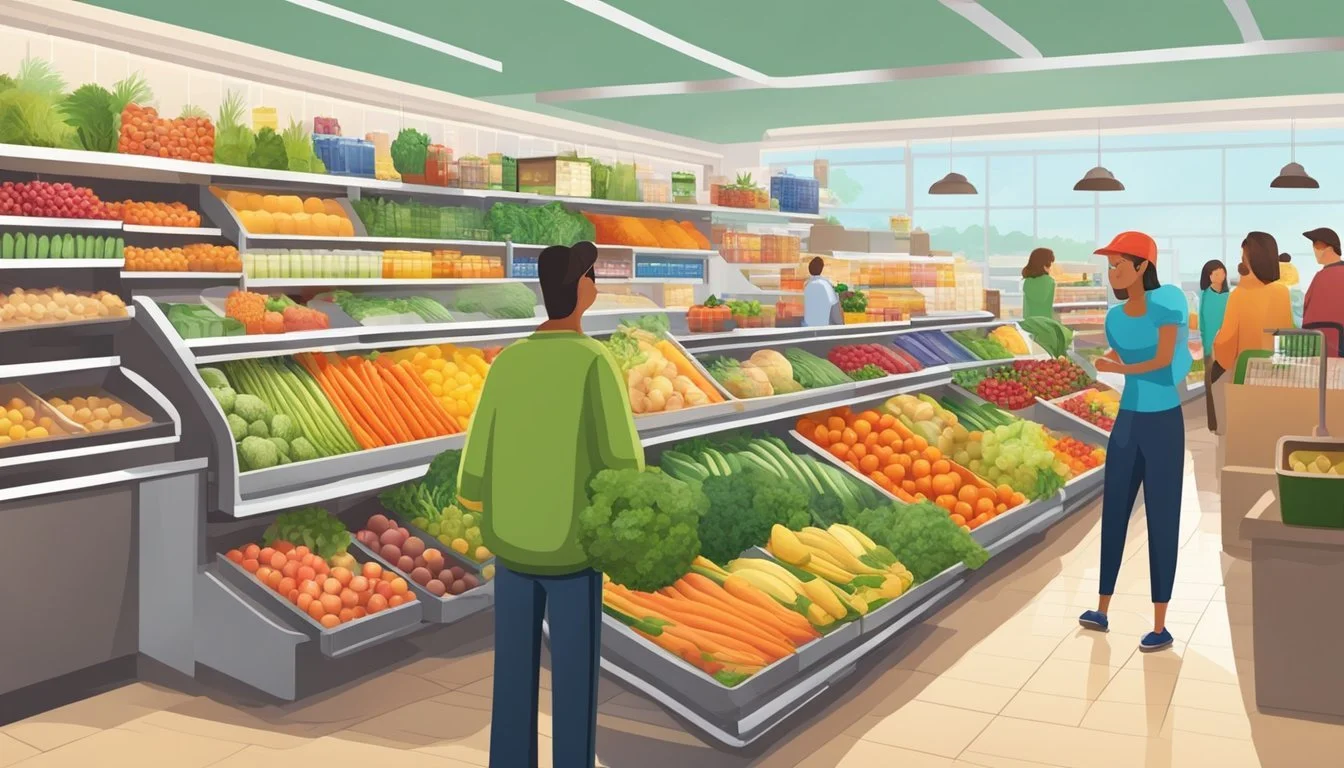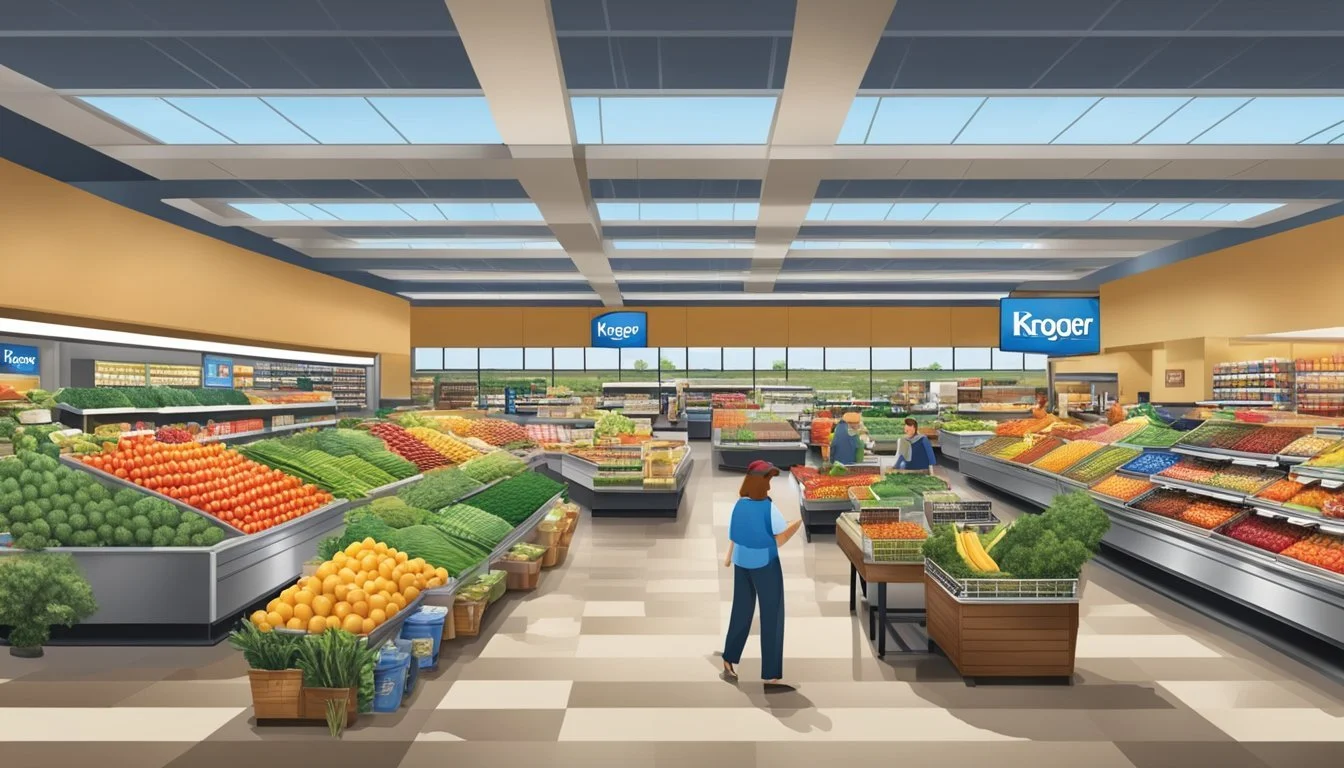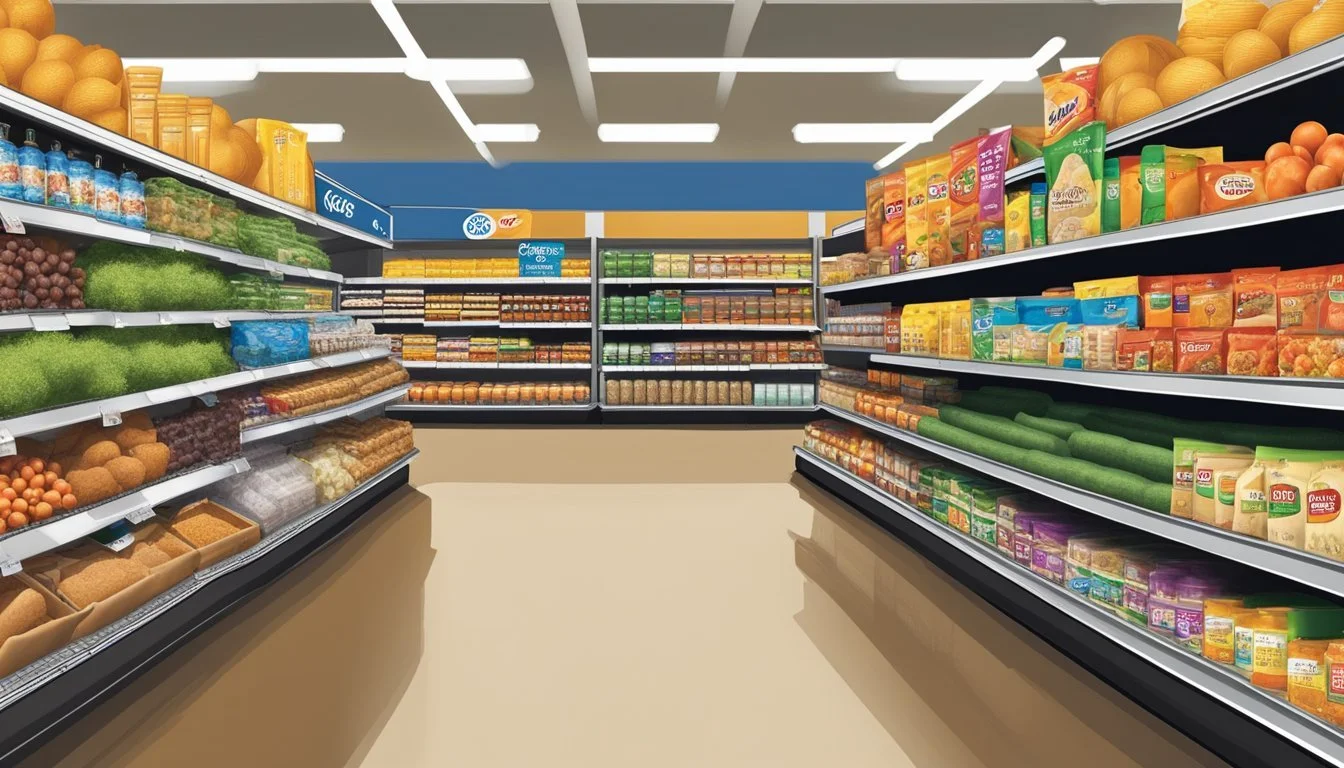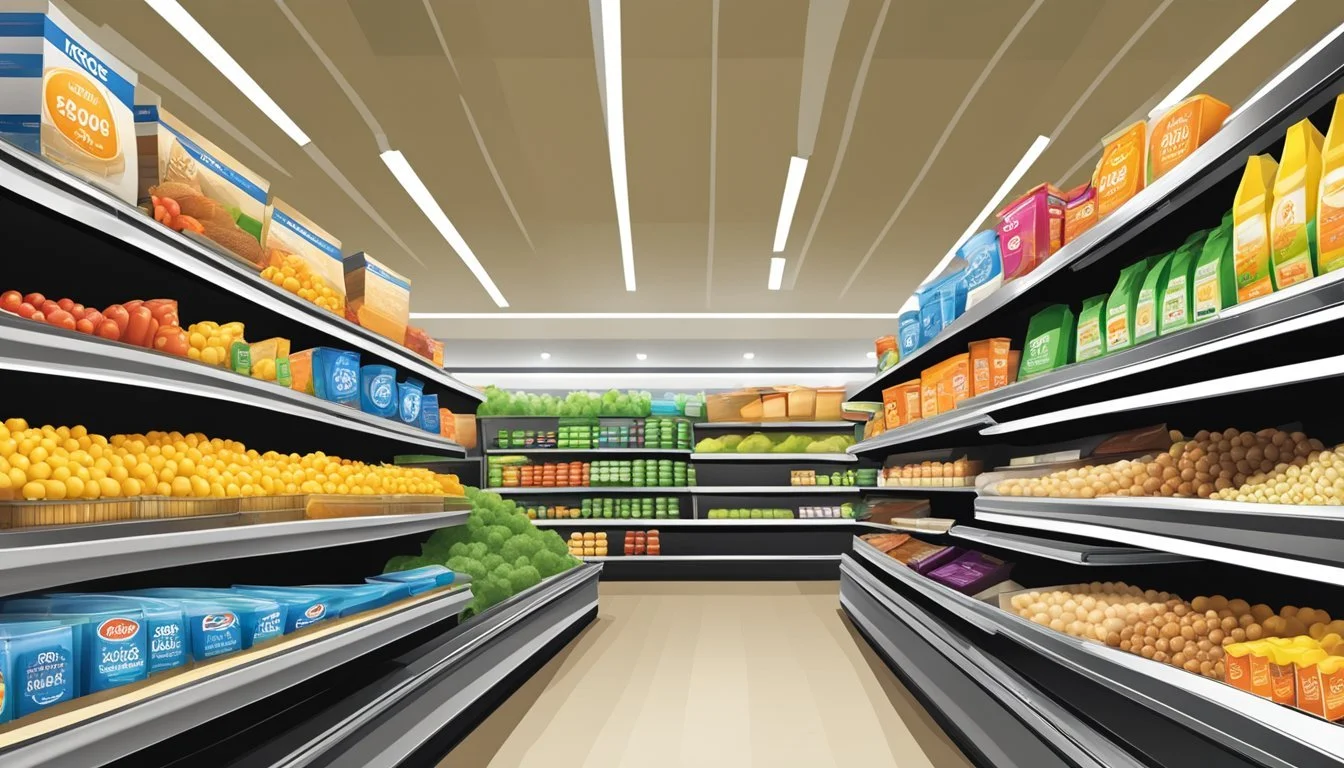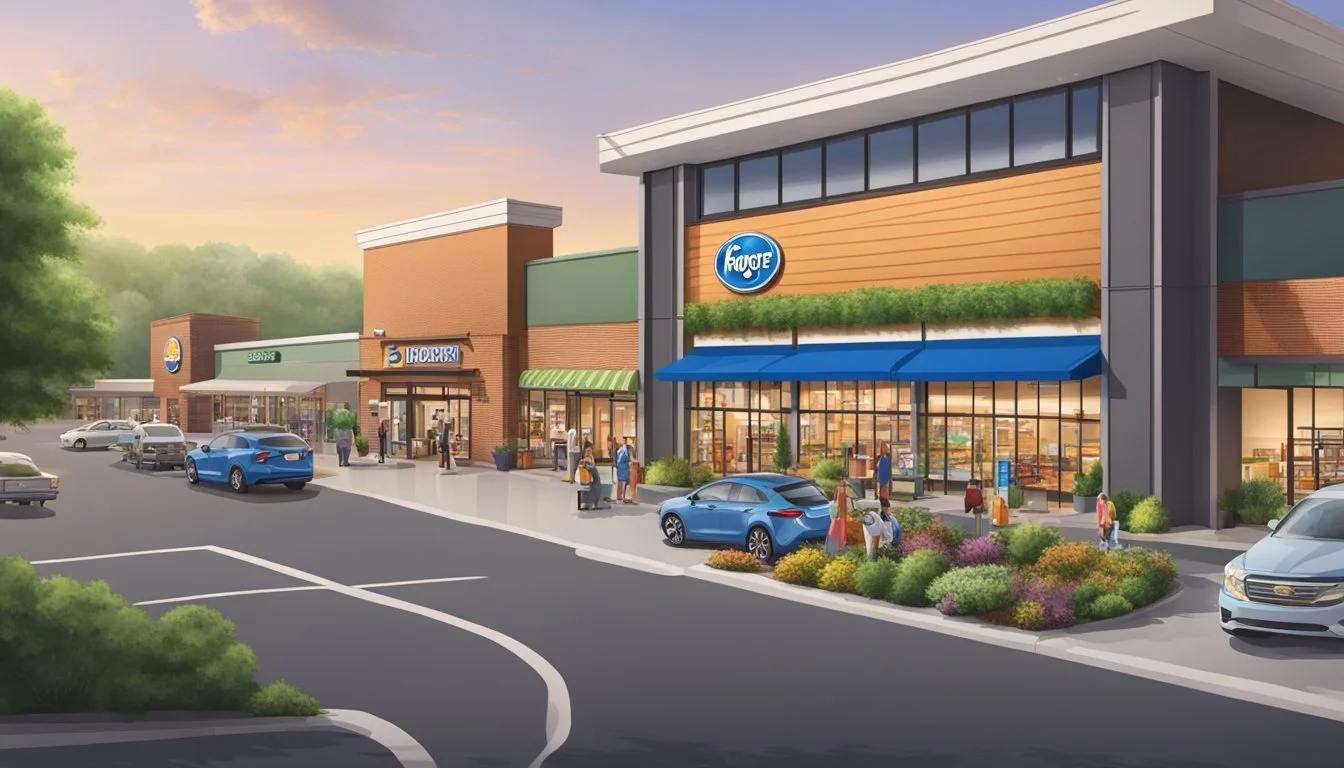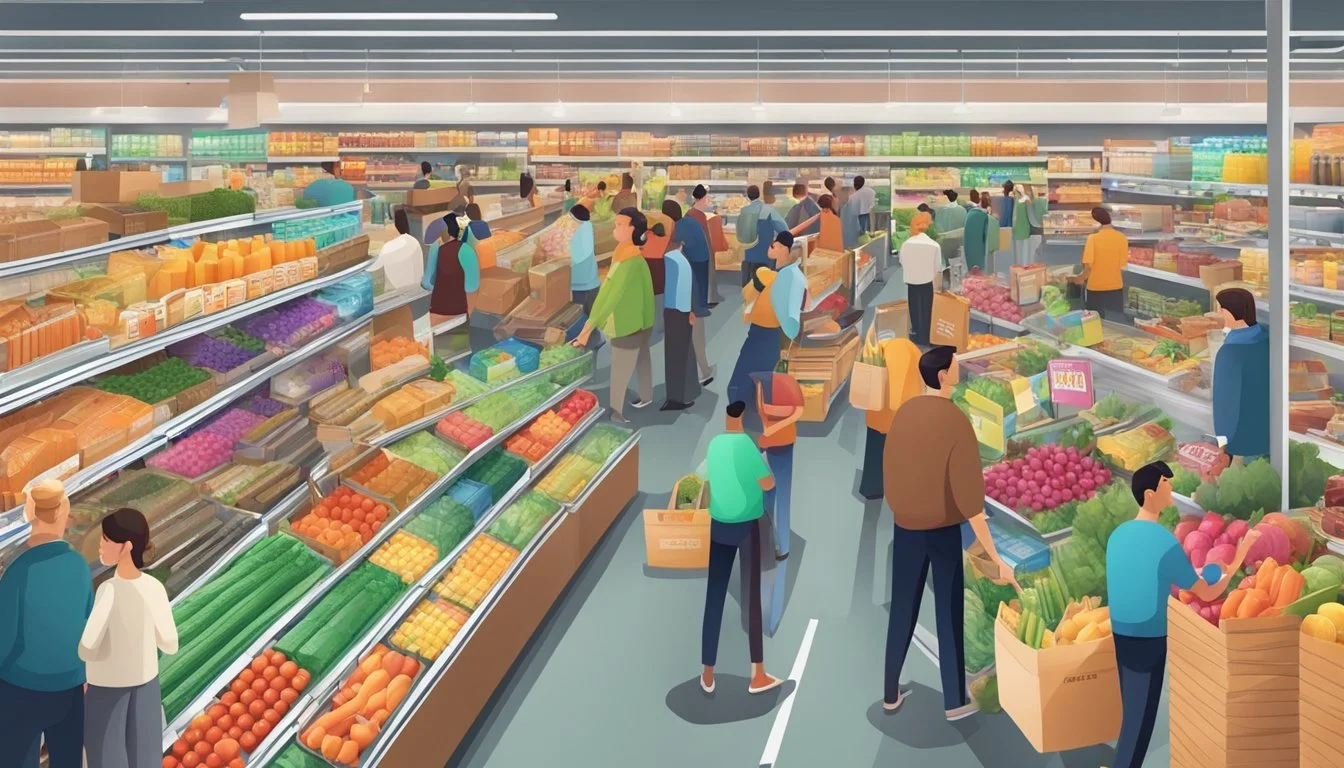Kroger vs Lucky Supermarkets
A Comprehensive Comparison
When it comes to grocery shopping, choosing the right supermarket can make a significant difference in your experience and budget. Kroger and Lucky Supermarkets are two popular chains that offer a variety of products to meet consumers' needs. Both stores have their strengths and unique offerings, catering to different customer preferences.
Kroger, as one of the largest supermarket chains in the United States, boasts a wide selection of products and competitive prices. The company has invested heavily in its private label brands, providing customers with quality alternatives to national brands at lower costs. Kroger generally offers better overall value and a more extensive product range compared to Lucky Supermarkets.
Lucky Supermarkets, a regional chain primarily operating in Northern California, focuses on serving local communities with a more personalized approach. The store emphasizes fresh produce and often features locally sourced products. While Lucky may have a smaller footprint than Kroger, it aims to create a more intimate shopping experience for its customers.
History and Overview
Kroger and Lucky Supermarkets have distinct histories spanning decades in the American grocery landscape. Both chains have undergone significant changes and expansions over the years.
Kroger: A Brief History
Kroger's story began in 1883 when Barney Kroger invested $372 to open a grocery store in Cincinnati, Ohio. His motto, "Be particular. Never sell anything you would not want yourself," set the foundation for the company's growth.
By the early 20th century, Kroger had expanded to hundreds of stores. The company introduced self-service shopping in 1916, revolutionizing the grocery industry. In the following decades, Kroger continued to innovate and acquire other chains.
Today, Kroger operates over 2,700 stores across 35 states, making it one of the largest supermarket chains in the United States. The company has diversified its offerings to include pharmacies, fuel centers, and online shopping options.
Lucky Supermarkets: Brand Evolution
Lucky Supermarkets originated in San Leandro, California, in 1935. The chain grew steadily in the following decades, becoming a familiar name in California's grocery market.
In 1998, Lucky's parent company, American Stores, was acquired by Albertsons. This led to the disappearance of the Lucky brand by 1999. However, the story didn't end there.
In 2006, Save Mart Supermarkets acquired the rights to the Lucky name in Northern California. This move brought the Lucky brand back to life in its original market. Today, Lucky Supermarkets operate primarily in Northern California, maintaining a regional presence in contrast to Kroger's national footprint.
Store Presence and Expansion
Kroger and Lucky Supermarkets have different geographical footprints and expansion strategies. Kroger boasts a extensive national presence, while Lucky Supermarkets operates on a more regional scale.
Geographical Footprint of Kroger
Kroger maintains a massive presence across the United States. The company operates over 2,700 supermarkets in 35 states. Its headquarters are in Cincinnati, Ohio, where it was founded in 1883. Kroger's reach extends from coast to coast, with a strong presence in the Midwest, South, and parts of the West.
Key markets for Kroger include:
Ohio (home state)
Illinois
Arizona
California
Texas
Kroger continues to expand through acquisitions and new store openings. The company is building three new massive stores as part of its expansion plans. These larger-format stores will offer expanded merchandise selections.
Lucky Supermarkets' Reach
Lucky Supermarkets has a more limited geographical presence compared to Kroger. The chain primarily operates in Northern California. Lucky Supermarkets was originally part of American Stores Company but has changed ownership over the years.
Lucky Supermarkets' store count is significantly smaller than Kroger's. The chain focuses on serving specific communities within its operating region. Lucky Supermarkets aims to provide a more localized shopping experience tailored to the preferences of Northern California consumers.
While Lucky Supermarkets hasn't pursued aggressive nationwide expansion, it has maintained a loyal customer base in its core markets. The chain's strategy emphasizes serving its existing communities effectively rather than rapid growth across new territories.
Product Variety and Quality
Kroger and Lucky Supermarkets differ in their product offerings and quality standards. Both chains strive to meet customer needs, but their approaches and strengths vary across key categories.
Grocery Selection and Fresh Food
Kroger boasts a wider selection of products compared to Lucky Supermarkets. With nearly 70,000 items, Kroger provides customers with extensive options across various categories.
Lucky Supermarkets, while offering fewer total products, focuses on curating a selection that caters to local preferences.
Both stores stock essential groceries, but Kroger's larger footprint allows for more variety in brands and specialty items.
In the fresh food department, Lucky Supermarkets emphasizes locally sourced produce when possible. Kroger, on the other hand, leverages its size to offer a mix of local and nationally distributed fresh foods.
Quality of Meat and Produce
Meat quality varies between the two chains. Kroger's meat department typically offers a broader range of cuts and varieties.
Lucky Supermarkets often partners with regional farms and ranches, potentially providing fresher, more locally sourced meats.
Produce quality can be inconsistent at both stores, depending on the season and location. Kroger's larger scale sometimes leads to longer supply chains, which may impact produce freshness.
Lucky Supermarkets' smaller size can allow for more frequent restocking of produce, potentially resulting in fresher offerings.
Both chains implement quality control measures, but customer experiences may vary by individual store and location.
Organic and Processed Food Options
Kroger has expanded its organic offerings significantly in recent years. Their Simple Truth brand provides a wide range of organic products at competitive prices.
Lucky Supermarkets typically stock a smaller selection of organic items but may feature unique local organic brands not found at larger chains.
For processed foods, Kroger's extensive product line includes numerous private label options alongside national brands.
Lucky Supermarkets tend to carry fewer processed food varieties but may focus on higher-quality or artisanal options in certain categories.
Both stores offer a mix of healthy and indulgent processed foods, catering to diverse customer preferences and dietary needs.
Pricing and Value for Money
Kroger and Lucky Supermarkets compete to offer shoppers the best value. Both chains employ different pricing strategies and discount programs to attract budget-conscious customers.
Comparing Everyday Prices
Kroger generally maintains lower everyday prices compared to Lucky Supermarkets. A basket of common grocery items at Kroger typically costs 5-10% less than at Lucky.
Kroger's larger scale allows for better supplier deals, translating to savings for customers. The chain's extensive private label offerings also contribute to lower overall prices.
Lucky Supermarkets focuses on competitive pricing in key categories like produce and meat. However, their smaller footprint can lead to higher costs in other departments.
Discounts and Store Brands
Kroger's loyalty program provides personalized discounts and fuel points, enhancing value for regular shoppers. The chain frequently runs "Buy 5, Save $5" promotions on select items.
Kroger's extensive range of store brands, including Simple Truth and Private Selection, offer quality alternatives at lower prices than national brands.
Lucky Supermarkets relies more on weekly specials and coupons to attract price-sensitive customers. Their "Lucky You" rewards program provides digital coupons and personalized offers.
Lucky's store brand selection is more limited but still covers essential categories. These products are priced competitively against national brands, though the variety is less extensive than Kroger's.
Customer Experience
Kroger and Lucky Supermarkets differ in their approaches to customer experience. Both chains prioritize shopper satisfaction but implement distinct strategies in store design, checkout processes, and customer support.
Store Cleanliness and Layout
Kroger maintains high standards of cleanliness across its stores. Aisles are typically wide and well-organized, allowing for easy navigation. Product placement is strategic, with frequently purchased items positioned for convenient access.
Lucky Supermarkets also emphasizes cleanliness but takes a more compact approach to store layout. Their smaller footprint often results in narrower aisles. However, this can create a more intimate shopping environment favored by some customers.
Both chains regularly update their store designs to enhance the shopping experience. Kroger has invested in modern fixtures and lighting, while Lucky focuses on creating a neighborhood market feel.
Check Out Efficiency
Kroger has invested heavily in checkout technology. Self-checkout kiosks are widespread, reducing wait times during peak hours. The chain also offers mobile scan-and-go options in many locations, allowing customers to bypass traditional checkouts entirely.
Lucky Supermarkets generally relies more on traditional staffed checkout lanes. While this approach may result in longer lines during busy periods, it provides a personalized touch that some shoppers prefer.
Both stores have implemented loyalty programs that can speed up the checkout process by storing payment information and applying discounts automatically.
Customer Service and Support
Kroger places a strong emphasis on employee training, resulting in knowledgeable staff across departments. Customer service desks are prominently located and well-staffed to handle inquiries and returns efficiently.
Lucky Supermarkets often cultivates a more personal relationship with customers, particularly in their neighborhood locations. Staff members may know regular shoppers by name, creating a friendly, community-oriented atmosphere.
Both chains offer online customer support options, including social media channels and dedicated helplines. Kroger has expanded its digital support infrastructure, while Lucky maintains a focus on in-store, face-to-face assistance.
Private Labels and Exclusive Products
Kroger and Lucky Supermarkets both offer unique store brand products to differentiate themselves and provide value to customers. These private label lines span various categories and price points.
Kroger's Exclusive Lines
Kroger boasts an extensive array of private label brands. Simple Truth, their organic and natural line, has seen significant growth. This brand offers over 1,550 products across categories like produce, meat, dairy, and pantry staples.
Kroger's Private Selection provides premium quality items at affordable prices. It includes gourmet foods, artisanal breads, and specialty coffee.
The company's standard store brand, simply labeled "Kroger," covers everyday essentials. This line aims to match national brand quality at lower prices.
Kroger's private labels have contributed to increased sales. Recent reports show a 10.2% jump in store brand sales compared to the previous year.
Lucky Supermarket's Unique Offerings
Lucky Supermarket, part of The Save Mart Companies, offers its own set of private label products. The "Lucky" brand covers a wide range of grocery items, from canned goods to dairy products.
Their "Pacific Coast Selections" line focuses on fresh produce and meats. This brand emphasizes locally sourced items when possible.
Lucky also carries the "Sunny Select" brand, which provides budget-friendly alternatives across various categories. This line aims to compete with national brands on quality while offering lower prices.
While specific sales figures for Lucky's private labels aren't readily available, store brands generally play a crucial role in attracting cost-conscious shoppers and building customer loyalty.
Community Involvement and Sustainability Efforts
Kroger and Lucky Supermarkets both prioritize giving back to their communities and environmental stewardship. Their initiatives range from food donation programs to sustainable packaging efforts.
Kroger's Community Initiatives
Kroger's Zero Hunger | Zero Waste program aims to eliminate hunger and food waste in communities. The company achieved 100% store participation in food rescue efforts, donating fresh produce and other items to local food banks.
Kroger also operates a Community Rewards Program, allocating about $30 million annually to local nonprofits. This initiative supports various organizations, including Scout troops and schools.
The grocery chain focuses on sustainability through responsible sourcing and packaging reduction. Kroger has set goals to improve the environmental impact of its operations and supply chain.
Lucky Supermarket's Environmental Approach
Lucky Supermarkets, while smaller in scale, emphasizes local engagement and eco-friendly practices. The chain prioritizes sourcing from regional farmers and producers to support local economies and reduce transportation emissions.
Lucky implements energy-efficient technologies in its stores, including LED lighting and improved refrigeration systems. The company also encourages customers to use reusable bags and offers recycling programs for plastic bags and containers.
Community involvement at Lucky includes partnerships with local food banks and sponsorship of neighborhood events. The supermarket chain strives to be a responsible corporate citizen in the areas it serves.
Employment and Workplace Culture
Kroger and Lucky Supermarkets offer distinct employment experiences. Each company has its own approach to workplace culture, pay, and career advancement opportunities.
Working at Kroger
Kroger employs a large workforce across its many store locations. The company increased its average hourly wage to $16.25 in 2021, though this remains below some competitors. Employee reviews on Glassdoor give Kroger an overall rating of 3.2 out of 5 stars.
Some Kroger workers have expressed dissatisfaction with pay and working conditions. In 2022, over 8,000 employees staged a three-week protest in Colorado demanding better wages.
Career advancement opportunities exist at Kroger, with options to move into management roles. However, critics have pointed out large pay discrepancies between executives and front-line workers.
Careers with Lucky Supermarkets
Lucky Supermarkets, a smaller regional chain, offers a different work environment than large national retailers like Kroger. The company emphasizes customer service and a neighborhood grocery store feel.
Lucky provides various positions from entry-level clerks to department managers. Pay rates are competitive within the local markets where stores operate.
Employee benefits may include health insurance, 401(k) plans, and paid time off, though specifics can vary by location and position. Lucky Supermarkets aims to foster a positive workplace culture focused on teamwork and community engagement.
Career growth potential exists, particularly for those interested in store management or specialized departments like produce or bakery.
Competitor Comparison
Kroger and Lucky Supermarkets face stiff competition in the grocery industry. Both chains must contend with retail giants and regional players vying for market share.
Kroger vs Walmart and Other Chains
Kroger competes directly with Walmart in many markets. Walmart's massive scale allows it to offer low prices, but Kroger counters with a wider grocery selection. In a recent price comparison, Aldi edged out both Kroger and Walmart for the lowest overall prices.
Kroger also battles other major chains like Publix and Albertsons. Publix is known for customer service, while Albertsons has a strong regional presence. Whole Foods targets the organic and premium segment.
Kroger has responded by expanding its organic offerings and investing in technology. The company's digital sales grew significantly in recent years.
Lucky Supermarkets in the Competitive Landscape
Lucky Supermarkets operates primarily in Northern California. It faces regional competition from Safeway and local chains.
Lucky positions itself as a value-oriented option. The chain offers competitive prices and frequent promotions. Its "3 Day Sales" attract price-conscious shoppers.
Lucky's parent company, Save Mart, gives it some economies of scale. However, it lacks the national reach of larger rivals. Lucky focuses on serving local communities with tailored product selections.
The chain has upgraded many stores to improve the shopping experience. New features include expanded produce sections and in-store dining options.
Consumer Insights and Feedback
Customer feedback provides valuable insights into the shopping experiences at Kroger and Lucky Supermarkets. Both chains have been evaluated through various surveys and reviews, offering a glimpse into consumer preferences and satisfaction levels.
Customer Satisfaction Surveys and Reports
Consumer Reports regularly assesses grocery stores nationwide. In their rankings, Kroger often places in the middle range among supermarkets. The American Customer Satisfaction Index (ACSI) has consistently included Kroger in its annual surveys.
Kroger's scores typically hover around the industry average, indicating satisfactory performance in areas like cleanliness, staff courtesy, and product quality. Lucky Supermarkets, being a smaller regional chain, is not always included in national surveys.
Local market research firms have conducted studies on Lucky Supermarkets in its operating areas. These reports suggest that Lucky performs well in terms of price competitiveness and produce freshness.
Reviews and Testimonials Analysis
Online reviews provide a more granular view of customer experiences. Kroger generally receives mixed feedback across various platforms. Positive comments often highlight:
Wide product selection
Competitive prices
Fuel points program
Common criticisms include:
Inconsistent customer service
Long checkout lines
Stock availability issues
Lucky Supermarkets tends to garner praise for its:
Local and ethnic food offerings
Friendly neighborhood atmosphere
Competitive pricing on produce
Negative reviews frequently mention:
Limited store locations
Smaller overall selection compared to larger chains
Both stores show strengths and weaknesses in customer feedback, reflecting the diverse needs and expectations of grocery shoppers.
Future Outlook and Expansion Plans
Kroger and Lucky Supermarkets are pursuing different strategies for growth in the competitive grocery market. Both chains aim to strengthen their positions through strategic initiatives and expansion efforts.
Kroger's Strategic Goals
Kroger is focusing on innovative expansion methods to reach new markets. The company plans to build three large-format stores with expanded merchandise offerings. These stores will showcase Kroger's commitment to providing a wider range of products to meet diverse customer needs.
Kroger is also embracing a store-less expansion model. This approach utilizes automated warehouses, spoke hubs, and micro-fulfillment centers to enter new markets without traditional brick-and-mortar locations. This strategy allows Kroger to expand its reach efficiently and cost-effectively.
The company forecasts positive growth for fiscal 2024. Kroger projects identical sales, excluding fuel, to increase between 0.25% and 1.75%. This outlook reflects the company's confidence in continued strong grocery demand.
Lucky Supermarkets' Vision for Growth
Lucky Supermarkets, while smaller in scale compared to Kroger, is focusing on regional expansion and enhancing its existing store network. The company aims to strengthen its presence in current markets by renovating stores and improving the shopping experience.
Lucky Supermarkets is investing in technology to streamline operations and enhance customer service. This includes implementing advanced inventory management systems and expanding online ordering capabilities.
The chain is also exploring opportunities to open new locations in underserved areas within its existing markets. By targeting strategic locations, Lucky Supermarkets aims to capture additional market share and build customer loyalty.
Conclusion
Kroger and Lucky Supermarkets both offer distinct advantages for shoppers. Kroger shines with its wide selection and competitive pricing on national brands. The chain's loyalty program provides additional savings opportunities for regular customers.
Lucky Supermarkets stands out for its focus on fresh, local produce at affordable prices. The California-based chain leverages its location in the fertile Central Valley to source high-quality fruits and vegetables.
In terms of pricing, Kroger tends to be more competitive on packaged and frozen goods. Lucky Supermarkets often has the edge on fresh items, particularly produce.
Store layouts and shopping experiences differ between the two chains. Kroger stores are typically larger, offering a one-stop shop for groceries and household items. Lucky Supermarkets maintains a more compact footprint, emphasizing efficiency for quick trips.
Both grocery stores prioritize customer service, though specific experiences may vary by location. Kroger's larger scale allows for more robust online ordering and delivery options in many areas.
Ultimately, the better choice depends on individual shopping preferences, location, and specific product needs. Budget-conscious shoppers may find value at both chains by taking advantage of sales and loyalty programs.

